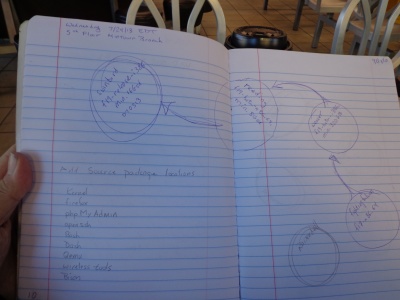No edit summary |
m (Added memo concerning packages I've fond of.) |
||
| Line 13: | Line 13: | ||
</p> | </p> | ||
==F34 -> F35== | |||
==F33 -> F34== | ==F33 -> F34== | ||
1/9/21 | 2/9/21</br> | ||
Applications</br> | |||
OpenSCAD</br > | |||
Gazebo</br> | |||
FreeCAD</br> | |||
Synfig (New Interest)</br> | |||
1/9/21</br> | |||
Once again communications channels.</br> | Once again communications channels.</br> | ||
Revision as of 17:07, 9 February 2021

Introduction
This content concerns community involvement starting with comprehending Fedora Quality Assurance practices and protocols related to being friendly. Looking above Quality Assurance my first observation is the importance of the current release schedule and the nature of Fedora's Hybrid Release Schedule. These observations are of the release of Fedora 33 in October 2020.
F34 -> F35
F33 -> F34
2/9/21
Applications
OpenSCAD
Gazebo
FreeCAD
Synfig (New Interest)
1/9/21
Once again communications channels.
F32 -> F33
12/08/2020
IRC Chat, Telegram, Matriix
Rebasing Silverblue
My first Silverblue installation went belly up this morning,
therefore 12/15/2020 is declared a Fedora involvement.
Release Schedule
The Life Cycle of a Fedora Release
Test Days
F34 Testing
virt-manager test
SilverBlue test
Raspberry Pi test
F33 IoT Test Day
Initial
Resources
F33 Btrfs By Default Test Week
Initial
Install to Previous KVM
Release-blocking (x86_64)
Desktop
Modularity
Guided Storage Configuration
Exploration
Resources
Resources
Visit me here: My Personal Blog
English Wikipedia Btrfs Article
